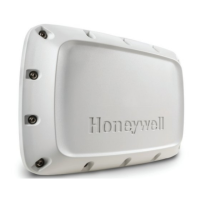Chapter 5 — About the GPIO Ports
58 IF1 Fixed RFID Reader User Manual
About the GPIO Interfaces
The reader has two general purpose input and output (GPIO) interfaces.
You connect external controls such as motion sensors or indicator lamps
to the GPIO interfaces, which can then trigger reader operations.
Each interface is electrically isolated from the reader and designed for
low voltage DC loads. The reader can also supply 5 VDC at 0.30 A to
external devices.
How the inputs and outputs are used depends on the RFID application
software being used in the system. You need to coordinate input and
output control wiring with the software developer.
How to Use the Input Interfaces
Each of the two inputs is compatible with input signals of 4.5 to 28 VDC.
Both the high and low signal contacts are exposed and isolated to
1500 V. Input impedance is 1.8 K ohms minimum.
In a typical application, the reader senses input from an external control
like a switch and then starts a tag read operation.
There are three basic ways to connect input controls to the reader input
interfaces:
• Supply the input interface with power from the reader.
• Isolate the reader from the input power source.
• Use an open collector solid state drive from a remote device to
control the inputs.
GPIO Input Signals
Signal Description Min. Typical Max.
V
in
(High) High input voltage 4.5 V 24 V 28 V
V
in
(Low) Low input voltage -1 V 0 V .8 V

